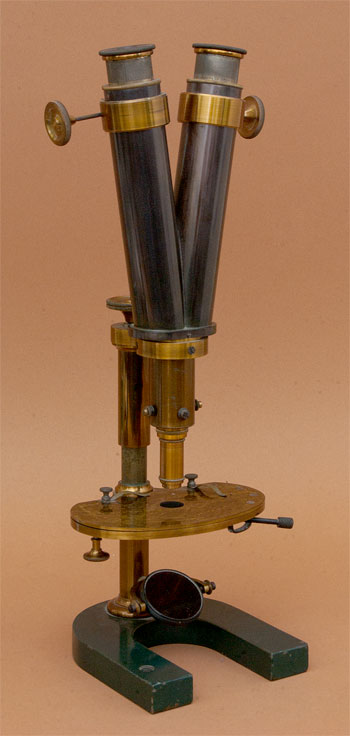 |
|||||
 |
 |
||||
 |
|||||
 |
 |
||||
The downtube is attached to the bottom of the cantalever, and the two body tubes attach to the top. A double-prism is inserted at the base of the downtube. This optical device splits the light from the objective to pass into both body tubes producing binocular vision. At the top of each body tube is a rack and pinion mechanism that raises of lowers each eyepiece independently. This effectively changes the interpupillary distance. The eyepieces are Huygenian consisting of two plano-convex lenses both with the curved surface facing into the microscope body. There are four objectives with this instrument, ranging from low to medium high magnification. One includes a screw-on Lieberkuhn reflector. The instrument comes with a mahogany case. Imaging is very good showing little chromatic aberration.
Hugo Schršder was an optician in Hamburg from c1860Đ1880. From his "Optical Institute" Schršder made "large astronomical instruments", and of course microscopes. Schršder is most known for his efforts to create a public observatory and planetarium. At that time a planetarium was a model of the solar system consisting of a mechanical device driven by a clock mechanism. (To see a beautiful example of a 19th C planetarium visit the Planetarium Zuylenburgh.) Schršder's planetarium became a reality 60 years later.
This MOM was created with the help of my loyal assistant Riley Maxon.
Microscope featured 8/2015
